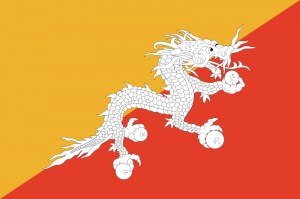 Where did you go to school when you were in the 4th or 5th grade?
Where did you go to school when you were in the 4th or 5th grade?
This was the question posed by Noa Jones, Education Coordinator for the Samdrup Jongkhar Initiative, a grassroots cooperative organization founded by Dzongsar Khyentse Rinpoche.
Personally, 4th grade was a huge time of transition for me. After living all of my life in Orlando, Fl, I was uprooted by my step-father’s job to go to Fort Peirce, Florida and then three months later to Danville, Virginia. In one year I attended three different schools and lived in four different houses. Eventually we landed back in Orlando, but looking back – it was a pretty tough year.
For the group of progressive educators that had assembled to discuss the Druk 3020 Curriculum, an initiative to reexamine Bhutanese education with fresh eyes, the answers varied from New York City to Bhutan.
On August 18, 2011, a think tank of museum and school educators, administrators, curriculum developers and teacher leaders ranging from the Rubin Museum of Art, the New York Hall of Science, Eugene Lang College, and City and Country School met at the Education Center to think about re-imagining school curriculum in Bhutan. Bhutan has become well known for the initiative of Gross National Happiness, however the school system has yet to integrate the ideals of GNH or specific socio-cultural identity in to the curriculum. The Druk 3020 curriculum is a secular set of educational units that will be prototyped in Bhutanese monasteries with students that will run parallel to standardized education. The goal is to see if project-based, student-centered curriculum will yield the same proficiencies as the standard curriculum which is hugely oriented around lectures (“chalk and talk”). The project is titled Druk 3020 because Dzongsar Khyentse Rinpoche has tasked the organizers of the project to think not just about a quick and immediate fix, but to imagine the future leaders and thinkers 1000 years from now.
While the goal of the meeting was to discuss actual curriculum design, the conversation drifted intensely to teacher preparation. Druk 3020 had been inspired by the Dalai Lama’s initiative, Science for Monks, a program developed “to develop the leadership needed to grow and sustain science learning that engages Buddhism with science, and to disseminate the work of the monastics and their unique perspective on science and spirituality.” During this intensive teacher training, members of the San Francisco based Exploratorium visit Tibetan Buddhist monasteries and work with monks to broaden their science understanding (watch in action).
Education in the Himalayas can be incredibly limiting. Monasteries are one route for poor families to educate their children and can be an incredible place to incubate and experiment with new curriculum outside the norms of the traditional school system. The Druk 3020 continually returns to the four pillars of Gross National Happiness: Environmental Conservation, Cultural Promotion, Sustainable and Equitable Development, and Good Governance.
Learn more about the Druk 3020 Curriculum


